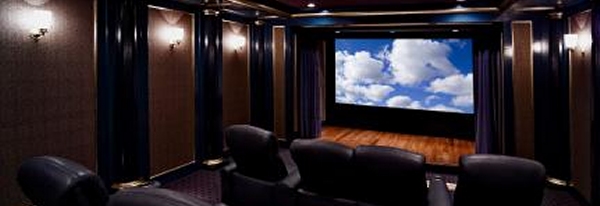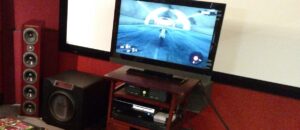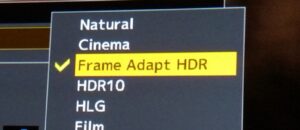A couple weeks ago, I ran a post referencing over to an article about the 20 most common home theater mistakes and how to fix them. Now, my friend and former DVDTalk colleague Jason has written his own list of suggestions called “Five Ways to Make Your Home Theater Better than the Rest.” It’s worth a read, and not just because he’s a pal of mine. (Though that doesn’t hurt. I have smart friends.)
This new article focuses mainly on the subject of theater room design. Jason recently renovated his own home theater, and has a lot of first-hand experience on this subject. Rather than repost the whole list here, I’ll let you jump over to the original article at Connected Home to read it there.
Of note, I’d really like to emphasize his tip about making sure that you have easy access to the back of your equipment rack. Failure to plan for this is a commonly overlooked mistake in many home theaters. With as fast as technology moves these days, odds are that you’ll need to replace some of your electronics gear to keep up. You’ll definitely want to be able to swap out cables and connect everything with as little hassle as possible.
Jason is an advocate for projection users to install acoustically transparent screens. I’m not sure that I’m sold on that one. While this would allow you to mount your center speaker behind the screen, it also brings some pretty big trade-offs. Jason mentions light loss. Another is that the perf structure of the screen may be visible at closer seating distances, and may cause loss of detail in the high-def image. But I’ll admit that I’ve never tried an acoustically transparent screen in my own home. The degree of this issue will vary based on the specific screen material used and your seating distance. He has more direct experience, and doesn’t find this to be a serious problem.
One thing Jason fails to mention is 2.35:1 Constant Image Height Projection. He installed a standard 16:9 screen in his own home theater. Personally, I’m a huge CIH fan, and can’t imagine designing a dedicated home theater room without a 2.35:1 screen. I’ll direct you back to my tutorial on that subject for more details.






EM
The tip on rear access is a very good one. If I had my druthers, I’d be able to walk and sit down behind my setup. Since I have limited space, I can’t, but I did make sure there was a little extra room in back and around. True, I sometimes have to stand on one foot and lean against the wall and turn a component a bit and wield a flashlight, but I have sufficient access when I need it. Thank goodness I don’t need it all the time. 🙂
Along similar lines, I’m a big believer in labeling or otherwise marking cables so that you know what goes with what—not just the A/V cables but the power cables too. Alas, to date my actions have not kept pace with my belief 🙂 , and I have not yet actually proceeded with the labeling. Perhaps the humiliation of publicly admitting this will spur me to action. 🙂 I’ve seen kits for this, though I imagine home-grown solutions such as masking tape and markers could do the trick quite effectively.
Mike M
due to glues and that markers wear off, I suggest something i used for network cabling at a medium sized data center.
Tyton Labels on a sheet you can put through a printer. label number is 63L-105
http://www.hellermanntyton.us/productDetail.aspx?lon=TAG63L-105